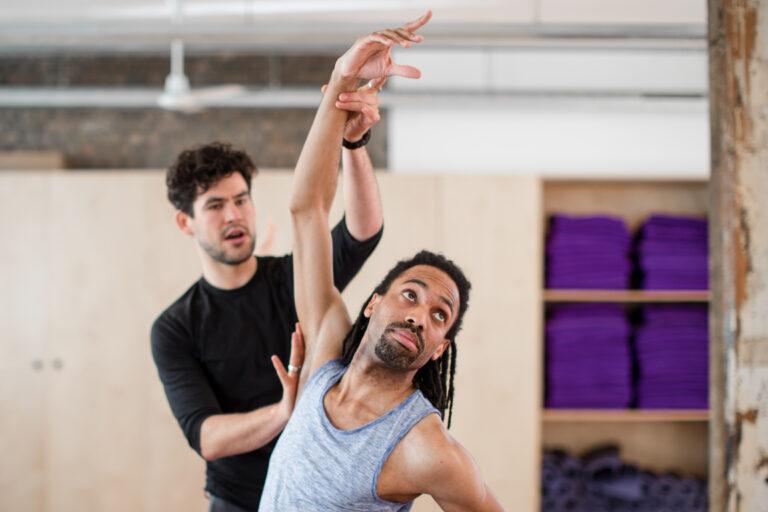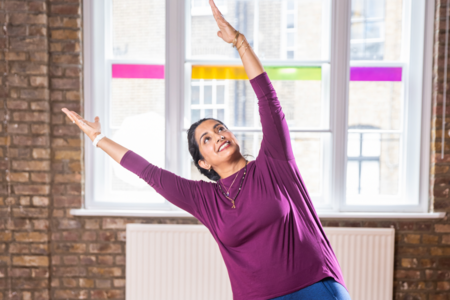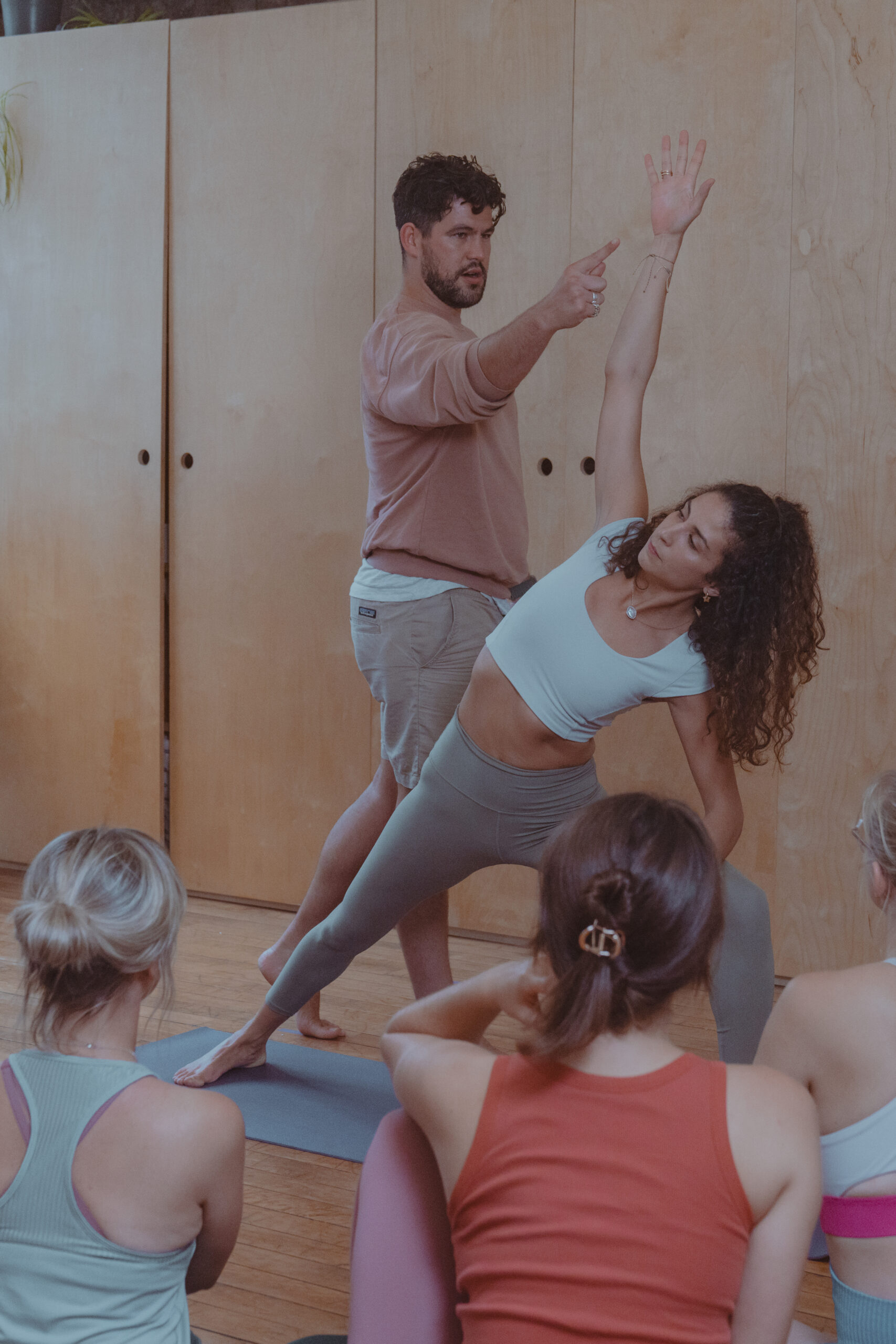Movember shines a light on men’s physical and mental health, which is increasingly recognised as a global problem, but why? Compared to women, men have a shorter life expectancy (3 years shorter in the UK), and are at greater risk of developing lifestyle diseases. Whilst there are a number of factors at play, dominant masculine norms (such as physical strength, emotional restraint and independence) are seen to impact on men’s health and behaviours. For example, men are often reluctant to seek help for mental health conditions and are more likely to engage in unhealthy and risky behaviours. Yoga has been found to have positive effects on a range of physical and mental health conditions. It is also associated with more positive health behaviours, suggesting that there are many potential health benefits for men.
So what do we know about men and yoga? Surprisingly not a great deal. Although yoga was traditionally practised by men, studies in Western countries consistently report that the majority of yoga practitioners are female (around 75%). Some have described ‘the modern feminization of yoga in the West’, with an under-representation of males in yoga magazines and social media. It is perhaps not surprising that this could act as a deterrent for men, particularly given the potential conflict with masculine ideals. It appears then, that many men are missing out on the potential health benefits of yoga.
Barriers to yoga participation for men
Whilst there are many studies looking at general barriers to practising yoga, such as time, access and negative perceptions, there are very few studies specifically looking at barriers for men. In Australia, Cagas and colleagues interviewed men (non-practitioners) about barriers and facilitators to participation, whilst in the UK, we recently conducted a survey with both practitioners and non-practitioners to understand men’s perceptions of yoga. Both studies tell a similar story about key barriers for men:
Yoga as ‘a feminine activity’ – men highlighted this as the greatest deterrent; they did not see themselves represented in media depictions of yoga nor ‘consider yoga a culture for men’. For some there was even a stigma associated with practising yoga which was viewed as ‘not socially accepted’ for men.
“I guess in a sense yoga isn’t seen as masculine, and it’s easier to make time for a workout as it is masculine and strong, but with yoga I guess my innate belief is that it is feminine.” (Non-practitioner)
Preference for other physical activity – more traditional physical activities consistent with traditional male norms of strength, high-adrenaline and competition were valued over ‘slow-paced, less competitive’ yoga. Yoga thus lacked appeal both in terms of physical benefits and enjoyment, both of which are particularly salient to the maintenance of any positive health behaviour.
“I’d rather spend my time with more ‘useful’ exercises. For example, exercises that are better for building muscle/strength/fitness. Flexibility isn’t very ‘useful’.” (Non-practitioner)
Lack of knowledge about the benefits of yoga – just as many men were not aware of the diversity of yoga styles, which might offer physical benefits equivalent to working out in the gym, non-practitioners had limited awareness of the broader health benefits of yoga. Yoga was primarily viewed as benefitting flexibility and reducing stress which were less highly valued by men. This is congruent with other studies in under-represented populations, such as BAME groups.
Accessibility – whilst attitudinal factors were the dominant deterrents, men also mentioned potential pragmatic (time, access to classes, affordability), physical (not being flexible enough), and inclusivity barriers (lack of male representation in classes).
How can we make yoga more accessible to men?
To attract men to yoga, it is clearly important to normalise participation in yoga by men both through representation and attitudinal change.
Representing men – there has been much discussion of the need for yoga to become more inclusive and move away from popular media representations of the ‘yoga body’ (i.e. young, thin, white women). In the same way we need to see ‘real men’, of all sizes, ages and backgrounds better represented in media depictions of yoga. For men unfamiliar with yoga, media representations are an important factor in shaping perceptions. Male role models who practise yoga, such as professional sporting figures, can also help to increase the visibility and attractiveness of yoga.
Changing men’s perceptions about yoga – highlighting the evidence based benefits for health and illness prevention is important to increase motivation to practise. For some men, this may be through offering yoga as a complementary or equivalent activity to sports and other physical activity practices, thereby linking in with men’s broader exercise and fitness motives.
For others, particularly when considering yoga as a health intervention (for example as part of social prescribing), yoga can offer a more accessible practice for those who are overweight, have limited mobility or self-confidence. Recommendations from others, such as health professionals, friends of partners can be an important motivator for uptake.
Classes and workshops oriented towards men – creating spaces that are more welcoming of men that break down gendered lines and address the needs, preferences and bodies of men. Men-focused classes may be valuable in attracting men to yoga, enable them to experience the benefits and build confidence. Male-only classes may also promote the socio-emotional benefits of yoga through creating a sense of community and belonging – which I wrote about in last month’s blog on yoga and social connectedness.
Clearly more research is needed to better understand how to increase the accessibility of yoga to men (and other under-represented groups), particularly those who might benefit but would not otherwise be drawn to yoga. Afterall, yoga should be accessible and available to all.
Bio
Dr Tina Cartwright is a health psychologist at the University of Westminster. She is a lifelong yoga practitioner and conducts research into the health effects of yoga and how to optimise wellbeing.
E: [email protected] T:@TinaJCartwright










